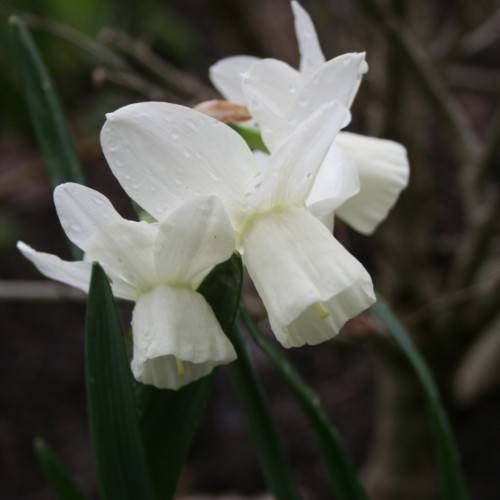
triandrus daffodil
Narcissus 'Ice Wings'
Cycle:
Perennial
Watering:
Average
Hardiness Zone:
4 - 9
Flowers:
Flowers In Spring
Sun:
Full sun,part shade
Leaf:
Yes
Growth Rate:
Low
Maintenance:
Low
Care Level:
Medium
watering
For optimal growth and blooming of the Triandrus daffodil (Narcissus 'Ice Wings'), water at a rate of approximately 1 inch per week but do not over water. It is best to water the plant at the base of the plant and not its leaves or flowers. The root system should be consistently moist, but not soggy. Water early in the morning when the temperatures are cooler and light is lower, allowing the foliage to dry rather than remain wet through the cooler night hours. In drought periods, water deeper and less frequently to promote deep root growth. During the growing season, it may be necessary to provide supplemental watering to keep soil consistently moist. It is important to note that the plant will require less water in the fall and winter months.
sunlight
Triandrus Daffodils (Narcissus 'Ice Wings') thrive best in full sunlight and should get at least 6-8 hours of direct sunlight a day. It is important to note that these plants can still tolerate partial shade and do not require full day sun in all areas. However, in order to maximize flower production, it is best to provide these plants with as much direct sun as possible. To ensure its maximum performance, Triandrus daffodils should be planted in a well-draining soil in climates that experience cool nights throughout the spring. For best results, this particular species should be planted in late fall or early winter when temperatures are cool and the risk of freezes are minimal.
pruning
Prune your Triandrus Daffodil (Narcissus 'Ice Wings') in the late spring after the blooms and foliage have died back. You should prune away any dead or dying leaves and deadhead the faded blooms. Trim off any spent foliage and cut back the foliage to a few inches to help the plant regrow for the following year. When it regrows it should also provide you with new blooms, which can last for years if given the correct care.
